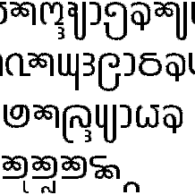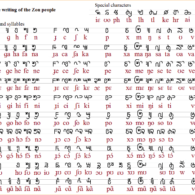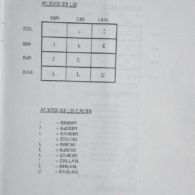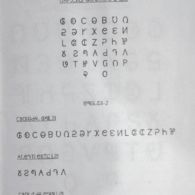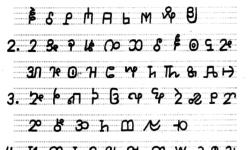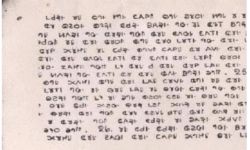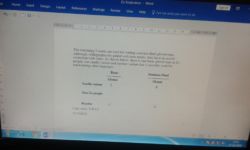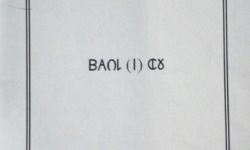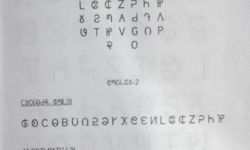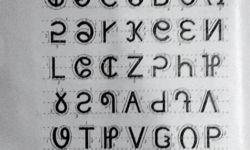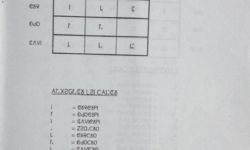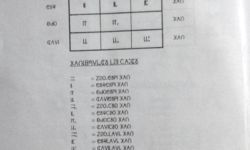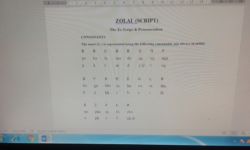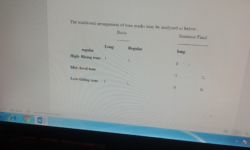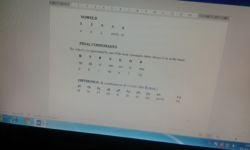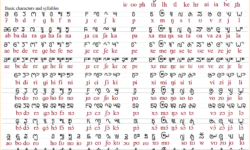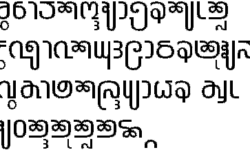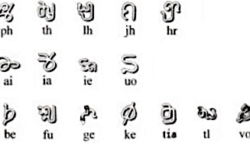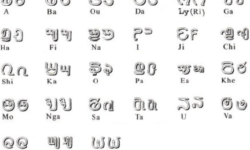Profile
Since 1900, the Zo or Zomi people, who number about 2.5 million and live on both sides of the borders of Myanmar and India, have had several scripts created for their language — not surprisingly, as there are many different subgroups within the Zo community, who speak some fifty different but related languages.
The most recent script was created within the greater Zo community on the Indian side of the border, in Manipur, where the community is more usually called Zou, and the word for “Zou language” is zolai, or “script/language of the highland people.”
The script was developed by M. Siahzathang of Churachandpur, Manipur in 1952 for writing the Zou language. It apparently took two decades for the script to attract much interest, but in the 1970s Zou organizations began expressing support for Siahzathang’s script, and the United Zou Organization adopted the Zou script as its official writing system for the Zou language in 1976.
Crucially, the Zou script received recognition and support from the Manipur state government, and the Manipur State Kala Academy acknowledged the work of Siahzathang by presenting him with awards in 1984 and 1991.
In the 1990s, literary organizations instituted working groups to manage the development and promotion of the script. The Zou Literature Society [ZLS]) in Churachandpur began to promote the script by forming the Zou Script Development Society [ZSDS], which in turn has published books to provide instruction in the script, including the Zou Script Self-Instructor and the Zou Script Primary Book.
More recently fonts have been developed, though the user community remains small and there is still debate among the broader Zo community as to whether their cause would be strengthened if they united under a single language or script.
Our latest information reports that the Latin Alphabet, instead of Siahzathang’s script, has been used in the publication of Zou vernacular texts which have been introduced in class IX and X under the Board of Secondary Education Manipur. So, in spite of the fact that the Zou tribe in Manipur intended to have its own script, the Siahzathang script is not doing well, and any literature published in Zou dialect uses the Latin alphabet instead.
In addition to the broad category of Zo or Zomi languages, a sub-group in Manipur and Myanmar speaks the Zou dialect, and within that sub-group, a particular community uses a script called Pau Cin Hau after its creator–yet another example of a religious script that appeared to its author in a dream.
Pau Cin Hau (1859–1948), the founder of the Laipian religion, was born in the Tedim region of Burma, speaking Tedim, one of the many aforementioned languages of the Zomi community.
The act of constructing a writing system for his religion was so significant it shows up in the name of the religion itself: the Tedim word lai means “writing” and Pau Cin Hau himself is referred to as laipianpa “script creator” and Laipian thus means “script-based religion.”
There are two distinct Pau Cin Hau writing systems, suggesting an interesting evolution of purpose. The script originally devised by Pau Cin Hau in 1902 is said to have been reformed twice, once into a logographic script consisting of 1,050 characters (the oddly specific number corresponds to the number needed to write out the text needed to recite a Laipian ceremony) and then into a 57-character alphabet.
The Pau Cin Hau script, or scripts, seem to have stayed close to their spiritual origins, being used first for writing and printing Laipian texts and books of ritual songs, and then for Christian literature.
The rise of Christian missionary activity in the region and the subsequent decline in the practice of the Laipian traditions led, not surprisingly, to the decline in use of the Pau Cin Hau script, especially when American Baptist missionaries created and introduced a Latin-based script and typeface. Yet we have heard from members of the Zou community that Pau Cin Hau is alive and its supporters are looking for help to digitize the script.
You can help support our research, education and advocacy work. Please consider making a donation today.
Links
General Script, Language, and Culture Resources
- Omniglot
- Wikipedia
- Unicode (PDF)
- Wikipedia (Pau Cin Hau Script)
- Scriptsource
- Zou Script Skyknowledge
- A Facebook page for those interested in the Pau Cin Hau script
- The website for the Zomi Association of the United States
- A Zomi news website
- An online dictionary that offers translations to Zolai, Tedim, Burmese, Hakha, Laimi, and Laizo/Falam Languages

